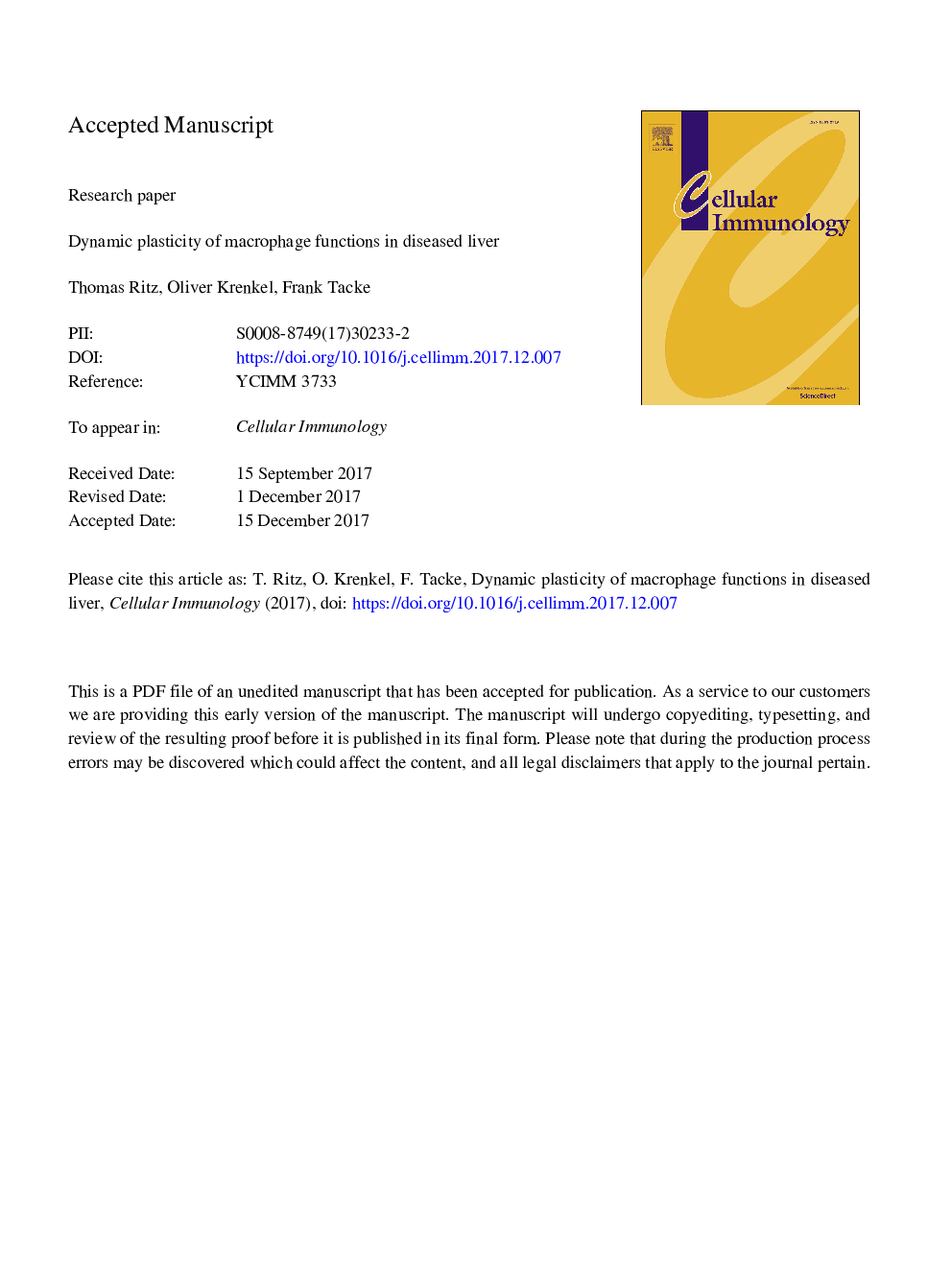| Article ID | Journal | Published Year | Pages | File Type |
|---|---|---|---|---|
| 8943875 | Cellular Immunology | 2018 | 20 Pages |
Abstract
Liver macrophages attract increasing interest due to their crucial roles in homeostasis and hepatic diseases. Recent findings in mice and man suggest a remarkable phenotypic and functional diversity of liver macrophages. Kupffer cells, the subset of tissue resident macrophages with sentinel functions in liver, mainly arise from embryogenic precursors, whereas in injury, liver tissue is engrafted by monocyte-derived macrophages. Both principal macrophage populations respond to local or systemic signals and have substantial effects on reduction as well as aggravation of hepatic diseases. Despite contrasting functions of heterogeneous macrophage subsets in disease progression and regression, they may provide promising targets for novel therapeutic interventions in hepatology. Areas of intense research include their multifaceted roles in metabolic diseases (non-alcoholic steatohepatitis, NASH), fibrosis or liver cancer (hepatocellular or cholangiocellular carcinoma, HCC or CCA). We discuss recent findings on the origin, diversity and functional plasticity of liver macrophages in homeostasis and hepatic disease conditions.
Related Topics
Life Sciences
Biochemistry, Genetics and Molecular Biology
Cell Biology
Authors
Thomas Ritz, Oliver Krenkel, Frank Tacke,
